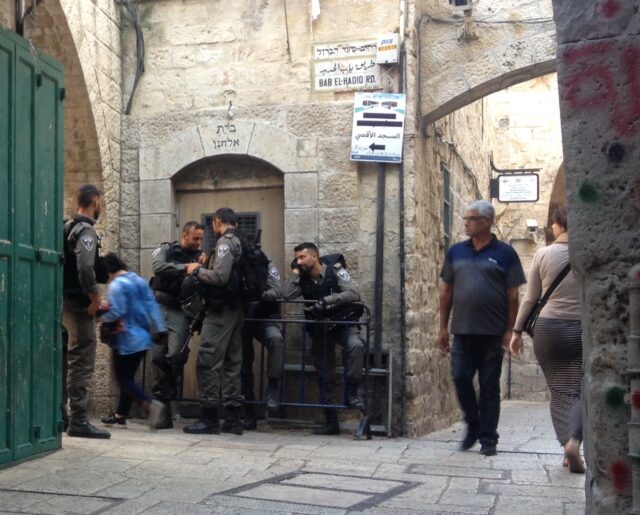The horrors inherent in the possibility of a mullah-led Iranian regime with nuclear weapons are clear. But less seems clear—at least, to the U.S. government—about the non-nuclear threat Iran poses. One result is that the nature of the rocket barrage from Lebanon and the Gaza Strip into Israel’s north on Passover was nearly obscured. An alliance between Iranian proxies Hamas and Hezbollah was on full display, but the U.S. administration had little to say about it.
Iran has spent the past 40 years eating Israel’s neighbors: destroying independent governments in Iraq, Syria, Lebanon, Gaza, Yemen—and threatening Jordan and the West Bank.
Iraq is a mess. (Yes, a lot of the mess has to do with U.S. policy, but let’s go to the pertinent issue.) Iraq and Iran have been at odds over their border, religious identity and politics for decades, with the last full war erupting in 1980, including the use of poison gas, with total casualty figures ranging between 1 million and 2 million people. After their war and during our war, Iran sponsored Shi’ite militias in Iraq and incubated the Islamic State (ISIS) as well. Iran still controls much of what happens in Iraq and uses it to move equipment and fighters to Syria for transit to Lebanon.
In a parallel move, a deal between former Syrian President Hafez Assad and Ayatollah Ruhollah Khomeini in the 1980s cemented ties between the traditional Shi’ite Iranians and the heterodox Alawites of Syria, who are sometimes called heretics by other Shi’ites. It was like getting a hechsher—Assad visited Tehran, the Ayatollah pronounced the Alawites “kosher Shi’ites,” and Syria became a stepping stone for Iran to Lebanon.
The fate of Lebanon was thus sealed and, after Israel withdrew from the south in 2000, Hezbollah fully moved in. During the 2006 Second Lebanon War, Iran’s proxy fired nearly 4,000 rockets over about five weeks. The United Nations passed a resolution; that’s what it does. Resolution 1701 forbade any forces other than the Lebanese Armed Forces (LAF) to have weapons south of the Litani River. That lasted about, well, about never. Today, Hezbollah has more than 100,000 rockets and missiles in Lebanon with the very real fear that some of them have been upgraded to precision-guided missiles or maneuvering munitions, drones and cruise missiles. Hezbollah also runs the government in Beirut.
During the Syrian Civil War, Iranian militias were the largest force pushing the majority Sunni population out of the center of the country, accounting for nearly 11 million refugees (6 million displaced inside the country and 5 million outside) and more than 500,000 dead (the United Nations stopped counting at one point). The Iranians have missile factories, military bases (including two near Israel’s border), militia allies and supply lines for weapons to Lebanon.
Hamas and Palestinian Islamic Jihad are also Iranian-sponsored. The fact that Hamas—a branch of the Muslim Brotherhood—is Sunni is irrelevant, as it sees the more nationalist Palestinian Authority (in the West Bank as an enemy, much as it does Israel. Next door, Sunni Jordan has both a peace treaty with Israel and a lot of Palestinians, making it a target for Hamas as well as for Iran. In Lebanon, there are approximately 250,000 to 300,000 Palestinians living in refugee camps primarily in the south near Israel. It is another Palestinian population base ripe for exploitation by Hamas—and, in this case, its ally Hezbollah.
When missiles rained down on Israel’s north during Passover it was the next step in tightening the noose. Rockets from both Gaza and Lebanon were augmented by rioters and terrorists in Jerusalem waving Hamas flags and frightening the local Palestinian population as it tried to provoke a massive response by Israel.
In all cases, the Hamas/Hezbollah/Iran Ramadan gambit failed.
Israel’s responses were limited and effective: missile attacks in both Gaza and Lebanon, and the arrest of Hamas terrorists who had barricaded themselves in Al-Aksa mosque on the Temple Mount in Jerusalem with incendiary devices (they called them “fireworks” to make it sound like part of a celebration, but fire inside the mosque is fire inside the mosque).
On a larger scale, Israel enforces three “no’s” in Syria: no nonconventional weapons, no precision weapons passing to Hezbollah and no Hezbollah basis near the Israeli border. Israel operates through a deconfliction mechanism with Russia that, thus far, suits them both.
And, if you were wondering why Israel doesn’t slam Jordan for a variety of nasty comments about Israel and for refusing to extradite the terrorist killer of an American teenager to the United States, or if you were wondering why Israel doesn’t slam the P.A. for incitement against Israel and Jews, this is why. Both Jordan and the P.A. are aware of their precarious position and Israel is aware of the alternative to King Abdullah of Jordan and P.A. leader Mahmoud Abbas.
Israel’s determination to defend its citizens from Iran, both nuclear and non-nuclear, as well as Iranian proxies, crosses the political lines from left to right. Israelis, no doubt, take comfort from that. But it would be a contribution to the well-being of the world if the Biden administration would join Israel in viewing the mullah of Iran as both a nuclear and a non-nuclear threat to peace in the region.






